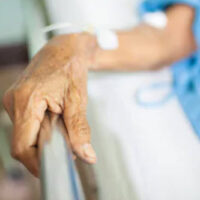Bedsores In California Nursing Homes: A Tragic “Never Event”

California nursing homes have a duty to provide quality care to residents but, considering the effects of age and underlying medical conditions, health concerns often arise. However, there is no excuse for the so-called “never events” that are the result of preventable errors and careless misconduct. Bedsores are an example of what happens when an assisted living facility breaches the duty of care, and statistics reveal the extent of the problem. According to the US Department of Health and Human Services (HHS), more than 2.5 million people develop pressure ulcers every year. This figure covers all health care settings, but another one is telling: Approximately 1 in 10 nursing home residents develops bedsores.
Neglect in assisted living centers is intolerable, but it is often up to loved ones to take action on behalf of a resident with declining health. An Oakland nursing home abuse and neglect lawyer will handle the legal process of holding the facility accountable, and an overview of the basics is also helpful.
How Bedsores Develop in Nursing Homes
Also termed decubitus ulcers, bedsores occur when blood flow to an area of the skin is cut off or blocked because of pressure. Skin cells die off, leading to redness, swelling, and irritation in the affected area. Eventually, the skin breaks open and becomes infected; there are also effects inside the body, so a bedsore can extend into muscle and bone.
Bedsores are the result of prolonged pressure on the skin, often because the person is unable to move or change positions. Residents in nursing homes spend a good portion of their day in a bed or chair, an ideal environment for development of these ulcers. Bedsores are also most likely to occur in parts of the body where skin just thinly covers bone, such as:
- Heels;
- Ankles;
- Shoulder blades;
- Back of the head;
- Hips; and
- Tailbone.
What to do if You Have Concerns About a Loved One
Recognizing the signs of bedsores is important, so keep an eye out for deep red, purplish skin that feels warm to the touch. Open sores and blisters are an indication that the pressure ulcer is progressing, and the resident will be in considerable pain. There are some tips you can use to get your loved one to safety, while also protecting his or her legal interests:
- Make arrangements for immediate medical treatment, which might require transport to an ER or urgent care center.
- Notify the California Department of Aging, which investigates and takes action against negligent facilities.
- Alert nursing home administration that a resident developed bedsores.
- Contact an attorney who can assist with the other aspects of the legal process, including filing an insurance claim for monetary damages.
Count on Our Oakland Nursing Home Abuse and Neglect Lawyers
If you can take care of these To-Do’s, you can trust Venardi Zurada, LLP to tackle the legal tasks necessary to protect your loved one. Please contact our offices in Oakland or Walnut Creek, CA to learn more. We can set up a free consultation to discuss compensation for medical costs, pain and suffering, and other losses.
Resource:
ahrq.gov/patient-safety/settings/hospital/resource/pressureulcer/tool/index.html

 The Official Injury Attorneys of the San Francisco 49ers
The Official Injury Attorneys of the San Francisco 49ers